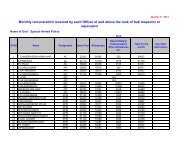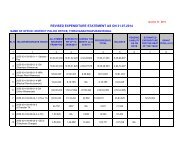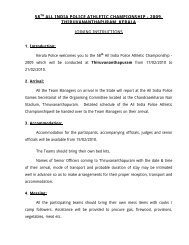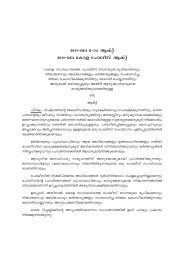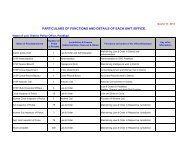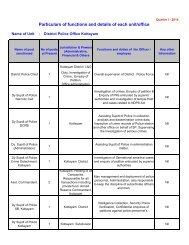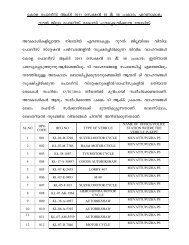Study Report - Women Victims of Crimes in Kerala - Kerala Police
Study Report - Women Victims of Crimes in Kerala - Kerala Police
Study Report - Women Victims of Crimes in Kerala - Kerala Police
You also want an ePaper? Increase the reach of your titles
YUMPU automatically turns print PDFs into web optimized ePapers that Google loves.
socio-demographic characteristics. The results <strong>in</strong>dicate that 54 percent <strong>of</strong> men reported<br />
not hav<strong>in</strong>g abused their wives; 17 percent reported physical but not sexual abuse <strong>of</strong> their<br />
wives; 22 percent reported sexual abuse without physical force; and 7 percent reported<br />
sexual abuse with physical force. Abuse was more common among men who had<br />
extramarital sex. Similarly, men who had STD symptoms were more likely to abuse their<br />
wives. Unplanned pregnancies were significantly more common among wives <strong>of</strong> abusive<br />
men, especially sexually abusive men who used force. The study concludes that wifeabuse<br />
appears to be fairly common <strong>in</strong> northern India and that abusive men were more<br />
likely to engage <strong>in</strong> extramarital sex and have STD symptoms. It also suggests that the<br />
men who have STD symptoms might have acquired them from their extramarital<br />
relationships, and placed their wives at risk <strong>of</strong> STD acquisition sometimes via sexual<br />
abuse. These abusive sexual behaviours would also result <strong>in</strong> <strong>in</strong>creas<strong>in</strong>g the number <strong>of</strong><br />
unplanned pregnancies.<br />
Sahoo et.al., <strong>in</strong> the study 'Domestic Violence <strong>in</strong> India: An Empirical Analysis'<br />
recognises domestic violence as the significant barrier to empowerment <strong>of</strong> women, with<br />
consequences such as women’s health, their health-seek<strong>in</strong>g behaviour and their adoption<br />
<strong>of</strong> small family norm. National Family Health Survey II data, 1998-99 which covered<br />
90,303 “ever married women” was used <strong>in</strong> the analysis. The survey provides <strong>in</strong>formation<br />
on fertility, the practice <strong>of</strong> family plann<strong>in</strong>g, <strong>in</strong>fant and child mortality, maternal and child<br />
health and utilization <strong>of</strong> health services provided to mothers and children. In addition, it<br />
provides <strong>in</strong>dicators <strong>of</strong> the quality <strong>of</strong> health and family welfare services, reproductive<br />
health problems, status <strong>of</strong> women and domestic violence. The survey follows a multistage<br />
sampl<strong>in</strong>g design to select the participants for the <strong>in</strong>terview. Background<br />
characteristics such as education, age, marital duration, place <strong>of</strong> residence, caste, religion,<br />
sex <strong>of</strong> the head <strong>of</strong> the household, standard <strong>of</strong> liv<strong>in</strong>g, work status <strong>of</strong> women, exposure to<br />
mass media and the autonomy <strong>of</strong> women with respect to decision mak<strong>in</strong>g, freedom <strong>of</strong><br />
movement and access to money are l<strong>in</strong>ked to domestic violence. An autonomy <strong>in</strong>dex is<br />
computed to understand the relationship <strong>of</strong> women’s autonomy with domestic violence.<br />
Bivariate analysis is used to exam<strong>in</strong>e the variation <strong>of</strong> domestic violence by background<br />
38



